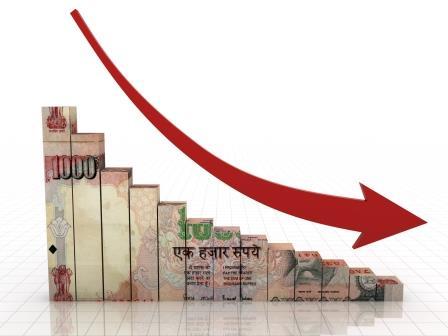
Widening current account deficit (CAD) and net capital outflows influenced the shortage of dollar liquidity reflected in the rupee.
Since the start of this year, Indian rupee has weakened more than 14 percent against the US dollar. It was a vertical fall from Rs 63.28 a dollar, its strongest point about two-and-half years, to its all-time low of Rs 72.74 hit during the week.
Widening current account deficit (CAD) and net capital outflows influenced the shortage of dollar liquidity reflected in the rupee. A strong dollar coupled with a collapse in emerging market currencies and the escalation of global trade war also affected the sentiments.
Since the start of the year, many of the emerging market (EM) currencies have dropped sharply. The Turkish Lira tumbled more than 78 percent, while Brazilian Real shed 30 percent and South African Rand declined by 19 percent so far this year.
Exchange rate movements usually depend on demand and supply of the currency. The outflow of foreign currency while importing and inflow of foreign money during exports influence the currency fluctuation.
High import bill on crude oil is one of the influential reasons for the recent drop in Indian currency. As per data, our oil import bills mounted more than fifty percent in the first four months of this financial year against the same period last year, causing widening current account deficit.
However, the present decline in INR is not the worst one considering its previous performances. Earlier, during the period of global financial crisis of 2008 Indian rupee had depreciated more than 24 percent.
The financial crisis of 2008 is regarded as the most severe financial crisis the world has ever faced since the Great Depression of 1930s . The crisis was initially originated in the US housing sector and eventually caught the entire world under its grip.
If we examine the last 10-year performance of INR, it has declined more than 80 percent so far.
Many commodities that are imported to the country are now trading firm in local market despite weakness in the international market. Domestic gold and oil prices gained largely due to the currency effect. Weak domestic currency causes higher landed cost for imported goods and services in the country.
London gold prices slid more than 12 percent since April while local prices held steady. Indian rupee which weakened from Rs 65 a dollar to Rs 72 a dollar during the period supported domestic prices.A similar trend has been seen in silver prices as well.
Crude oil prices gained substantially in the international market due to various fundamental reasons.
On NYMEX, prices gained about 11 percent since the start of the financial year, while Indian rates surged to a four year high, gaining about 30 percent during the same period.
As against its international counterpart, extra gains were recorded in Indian natural gas prices as well. However, unlike crude oil and gold, base metal prices moved in tandem with international trend. Weak demand outlook due to the ongoing US-China trade spat influenced the base metal complex sentiments.
On the agriculture front, commodities like soybean, cotton, palm oil, rubber etc. are exposed to the weak domestic currency.
Prevailing weakness in rupee may continue further unless any strong market intervention or policy measures from the RBI to cool down the currency. A delay in market action may take the rupee to Rs 73.50 or even more in the immediate run.
However, the ongoing weak fundamentals are expected to be short-lived which may support the currency later. On the commodity front, domestic prices likely to be held positive until any recovery seen in local currency.
First appeared in Moneycontrol
Posted: September 2018